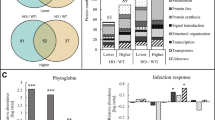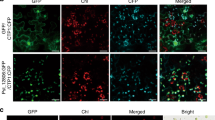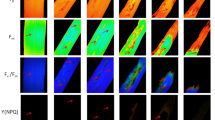Abstract
POWDERY mildew fungi (the Erysiphales) cause many important plant diseases. These fungi are obligate parasites, as they attack only living host tissue and cannot yet be cultured axenically. They exhibit extreme host specific parasitism and the biochemical mechanisms which determine host resistance or susceptibility are still obscure. Because of their basic metabolic importance, people have sought to determine whether alterations occur in nucleic acids after infection. Millerd and Scott1 reported that infection of susceptible barley leaves with powdery mildew resulted in increased amounts of RNA in host tissue and four days after inoculation there was approximately 20% more RNA/μg DNA than in non-infected leaves. In contrast, no change was observed in the amount of RNA after inoculation of resistant barley varieties. Malca et al.2 determined the base composition of RNA in susceptible mildew-infected barley leaves at various stages of disease development. They found a relative increase in guanylic acid and larger amounts of all nucleotides, reflecting the higher RNA content of mildewed leaves. Plumb et al.3 also reported a slight increase in RNA in susceptible wheat leaves infected with powdery mildew.
This is a preview of subscription content, access via your institution
Access options
Subscribe to this journal
Receive 51 print issues and online access
$199.00 per year
only $3.90 per issue
Buy this article
- Purchase on Springer Link
- Instant access to full article PDF
Prices may be subject to local taxes which are calculated during checkout
Similar content being viewed by others
References
Millerd, A., and Scott, K. J., Austral. J. Biol. Sci., 16, 775 (1963).
Malca, I., Zschiele, F. P., and Gulli, R., Phytopathology, 54, 1112 (1964).
Plumb, R. T., Manners, J. G., and Myers, A., Trans. Brit. Mycol. Soc., 51, 563 (1968).
Bennett, J., and Scott, K. J., FEBS Lett., 16, 93 (1971).
Allen, P. J., Amer. J. Bot., 29, 425 (1942).
Scott, K. J., and Smillie, R. M., Plant Physiol., 41, 289 (1966).
Falvey, A. K., and Staehelin, T., J. Mol. Biol., 53, 1 (1970).
Loening, U. E., Biochem. J., 113, 131 (1969).
Dyer, T. A., Miller, R. H., and Greenwood, A. D., J. Exp. Bot., 22, 125 (1971).
White, N. H., and Baker, E. P., Phytopathology, 44, 657 (1954).
Slesinski, R. S., and Ellingboe, A. H., Phytopathology, 60, 1068 (1970).
Author information
Authors and Affiliations
Rights and permissions
About this article
Cite this article
DYER, T., SCOTT, K. Decrease in Chloroplast Content of Barley Leaves infected with Powdery Mildew. Nature 236, 237–238 (1972). https://doi.org/10.1038/236237a0
Received:
Issue Date:
DOI: https://doi.org/10.1038/236237a0
Comments
By submitting a comment you agree to abide by our Terms and Community Guidelines. If you find something abusive or that does not comply with our terms or guidelines please flag it as inappropriate.



